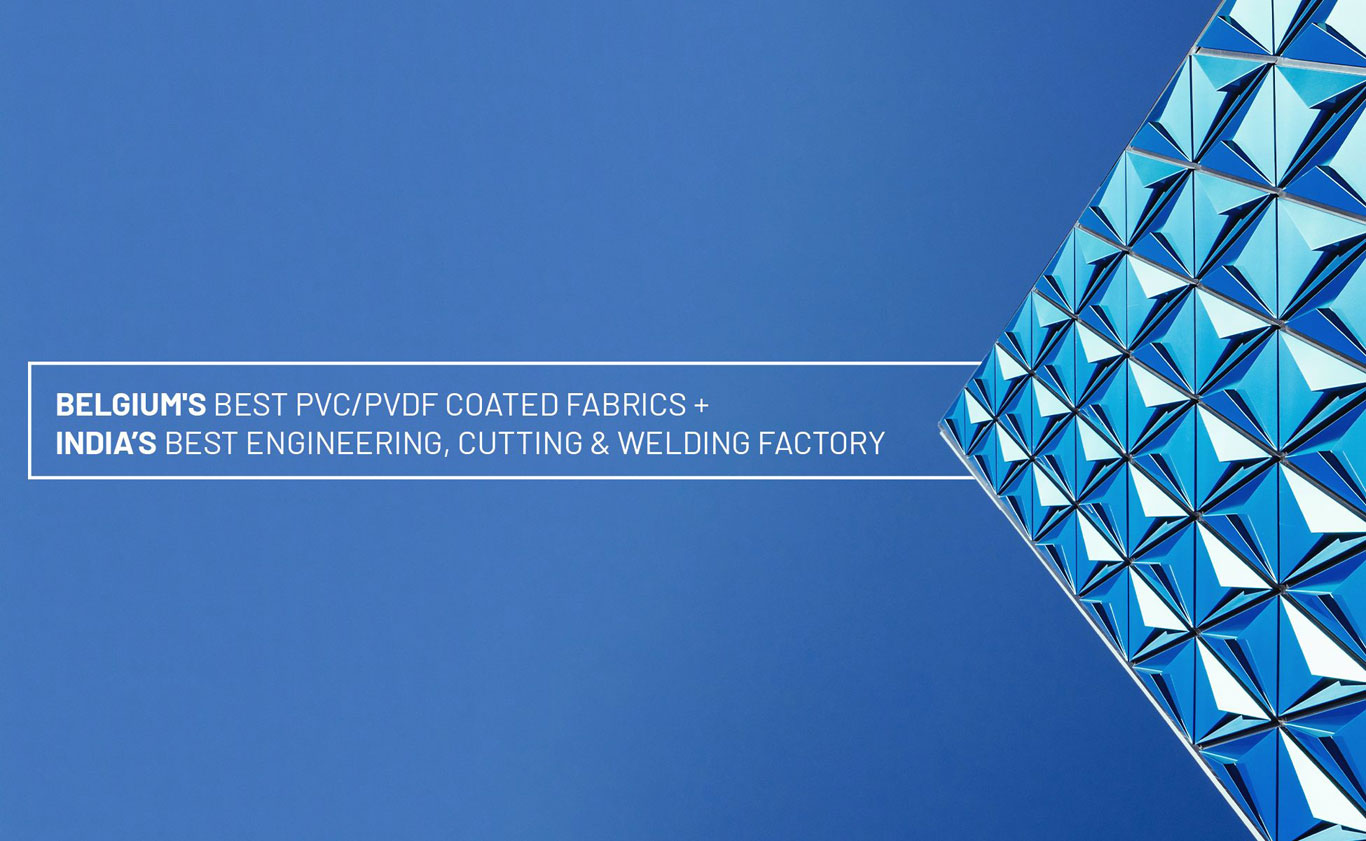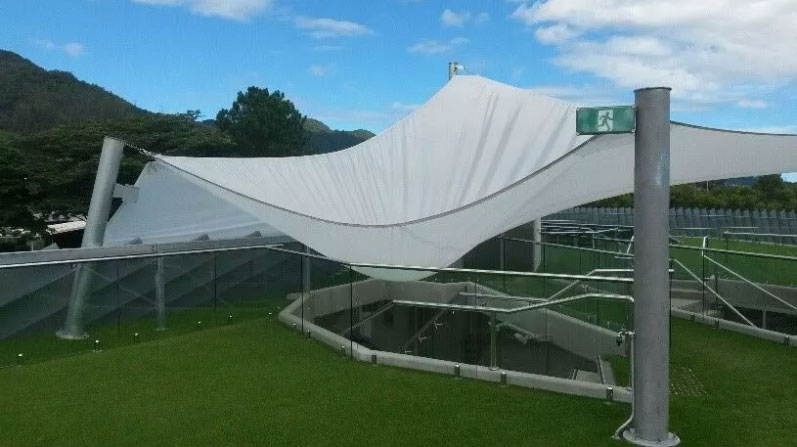
Water Ponding on Fabric Structures
Tensioned membrane structures are unique in their capability to carry very high loads in relation to their self-weight. This is due in part to the large deflection behavior of these structures that renders them relatively insensitive to specific load distributions. This same characteristic causes tensioned membrane roof structures to be uniquely vulnerable to water ponding, typically heavy rain and snow induced.
Tensioned membrane roof structures have enjoyed significant success in a wide variety of climates around the world. There are numerous structures that have been built in climates that require the structure to resist significant rainwater and snow loads.
However, there are a number of roof structures that have had problems with ponding due to low/shallow membrane surface slope mostly at the eaves and due to low tensioning of the membrane.
In practice, this is rarely necessary, for if a portion of a tensile membrane roof surface is found not to drain under small gravity loads, it is probable that it will pond.
Roof surfaces that have low slopes or flat regions that are in the drainage path should be suspect and subject to investigation. Large membrane spans with large radii of curvature are potential sites ponding instability and should be reviewed.
Ponding instability caused by rain can be quantitatively addressed in the non-linear analysis. Assuming some initial load, the deformed roof surface can be assessed for the potential to retain water, and thus with adequate slope and tensioning the problem can be solved.

Get Your Free Quote Today!
Tell us about your project needs and we'll provide a custom quote tailored to your specific requirements.
